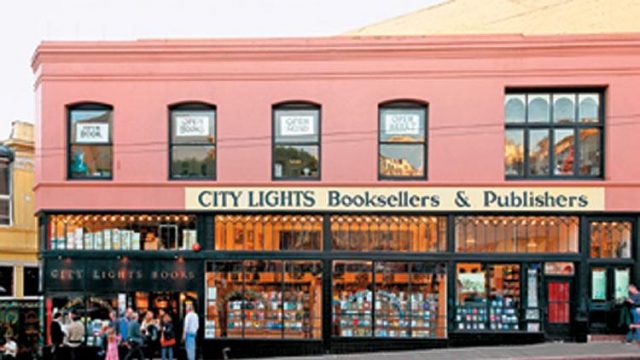A strip club stands opposite the City Lights bookstore in San Francisco’s Columbus Avenue. While customers browse through its inimitable collection, orange neon-lit girly cutouts glow at the strip club end as reaffirmation of sensory lives existing against morality censors.
Just as well for it was City Lights’s publishing arm that first brought out in 1956 Beat legend Allen Ginsberg’s seminal Howl and Other Poems — a collection later booked by authorities for obscenity. Howl has since sold in millions. It’s a book that some contend ‘made’ City Lights while others consider it mind-expanding. Ginsberg and the Beats, heavily promoted by City Lights, are often credited as flag-bearers of the 1960s counter-culture tide.
That wave had touched Indian shores. City Lights has published works of Kolkata’s Hungry Generation writers and poets — befriended by Ginsberg — when they faced a ban and arrest for obscenity. Indian writers retain a strong presence here.
Having turned sixty, City Lights’ continuance as a fulcrum of alternative culture was acknowledged by San Francisco authorities when they granted it historic landmark status in 2001 — a first for a business entity.
Its founder and poet-painter Lawrence Ferlinghetti is present through books and photographs. City Lights too lures lovers of alternative world literature and curious visitors — posters mentioning ‘Books not Bombs’, ‘Clothed or nude, we are not obscene’ and ‘Corporations aren’t people’ indicate its free-thinking radical moorings.
Rare photographs of Ginsberg, Jack Kerouac, William Burroughs, Neal Cassady and full-fledged sections on Beat literature and poetry underline its literary bias. Meanwhile, in the labyrinthine basement, a poster on a wooden door mentions ‘I’m the Door’.




